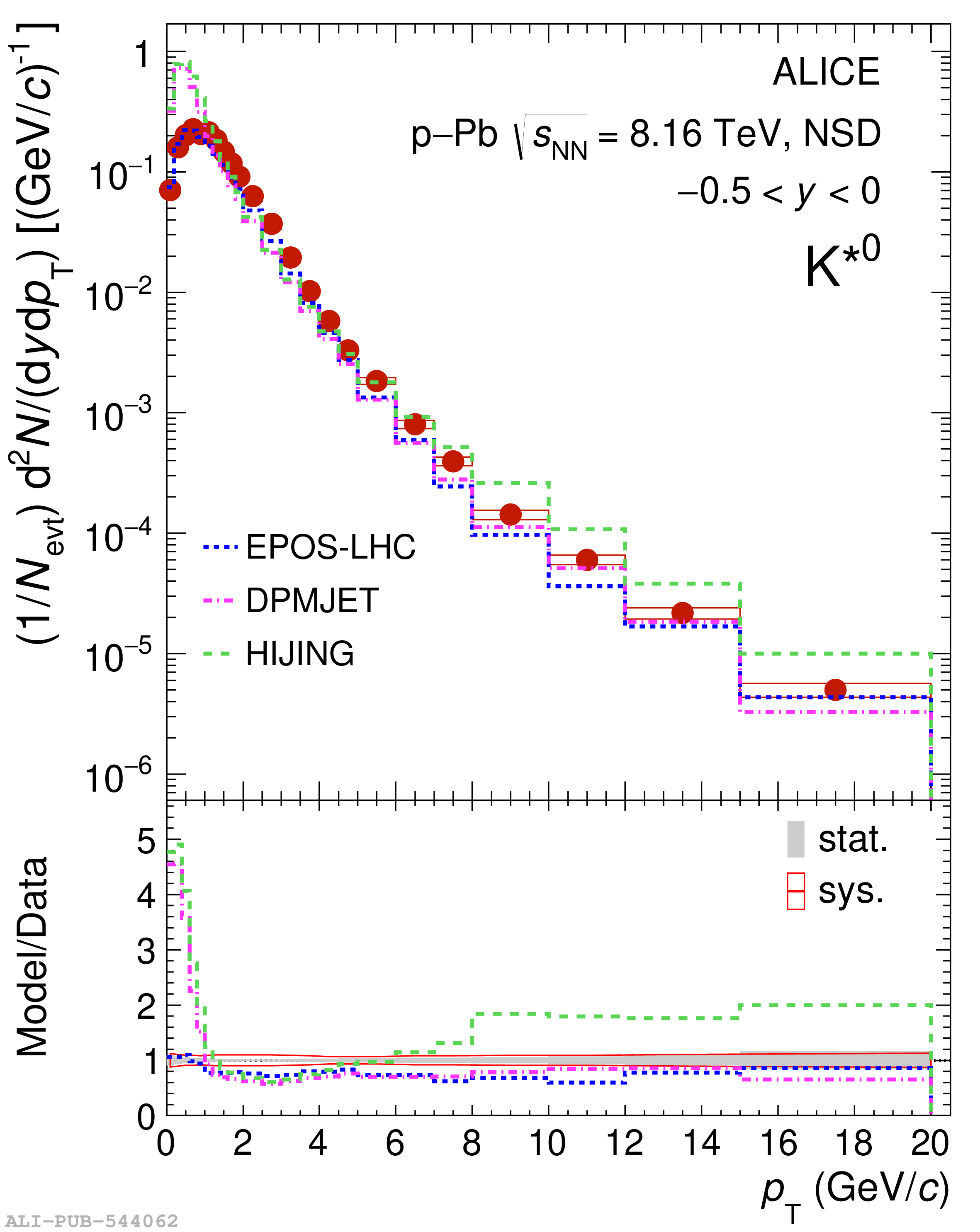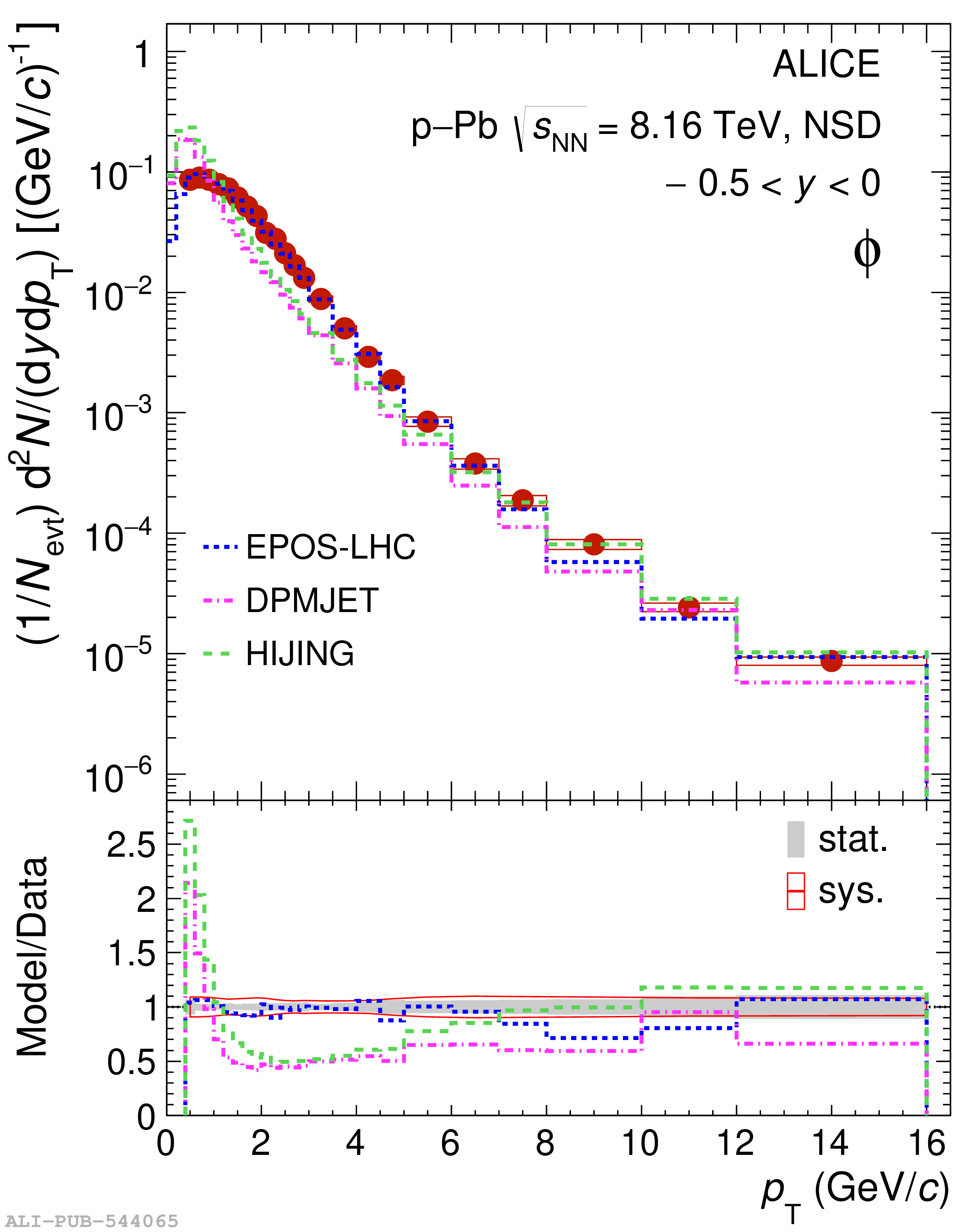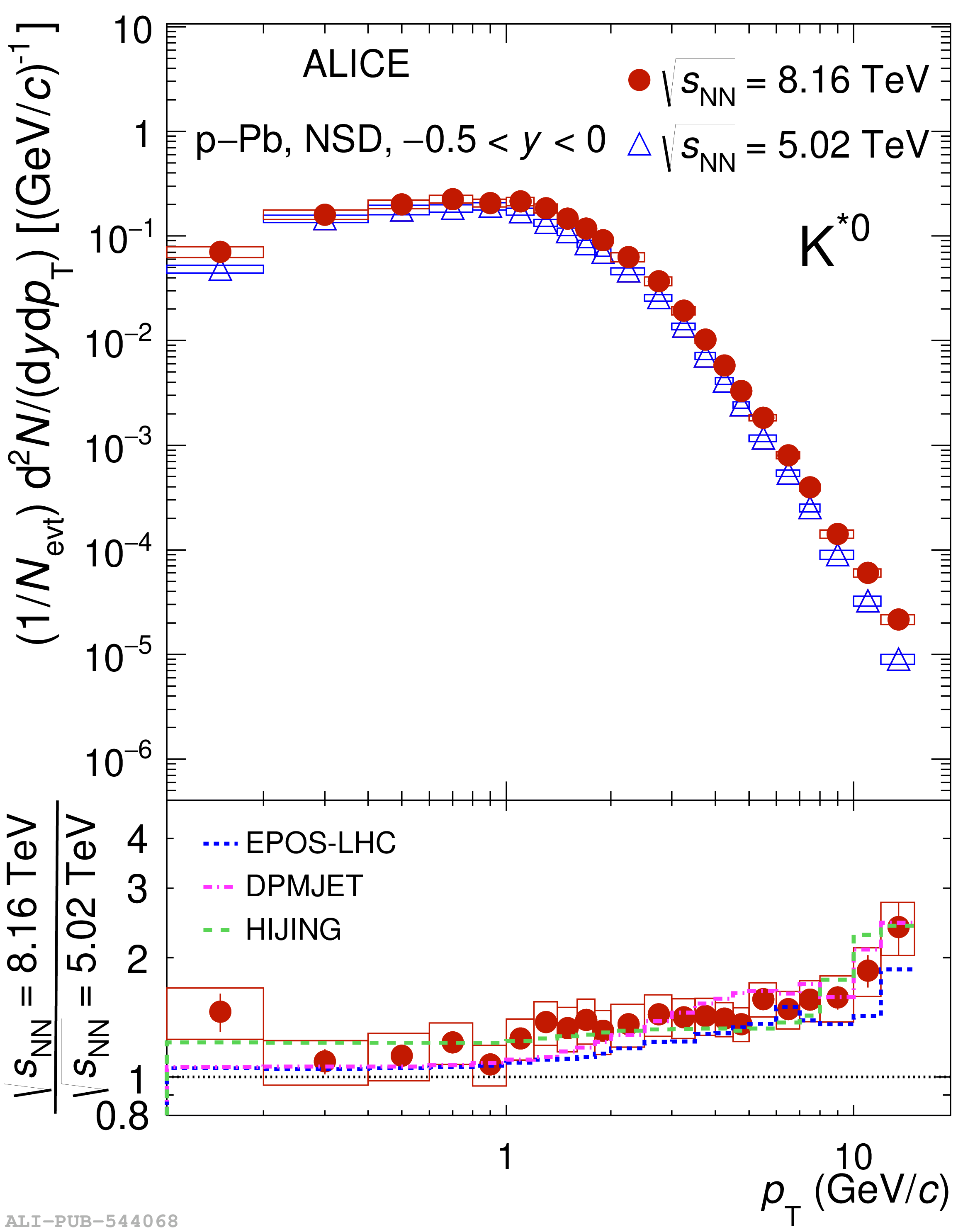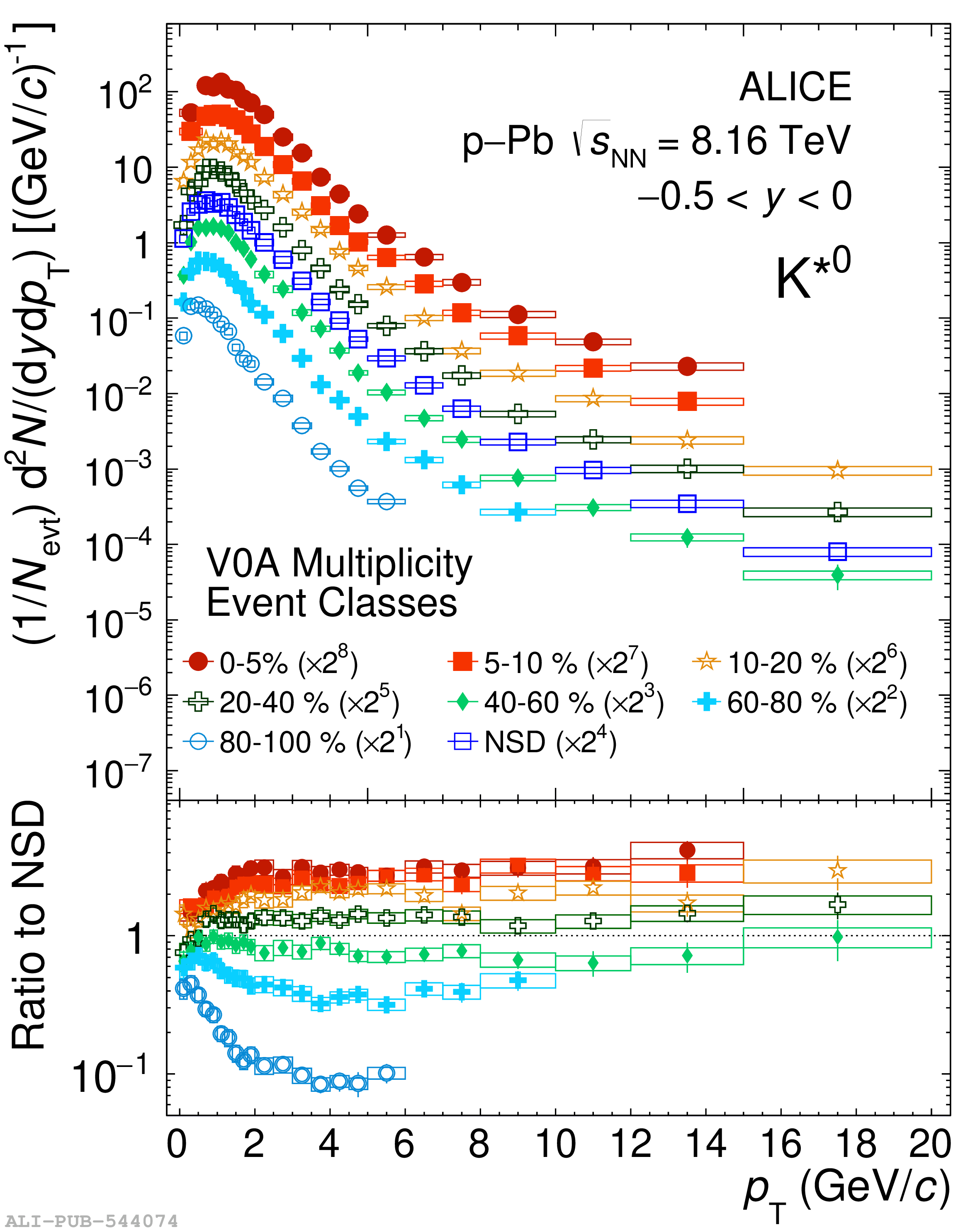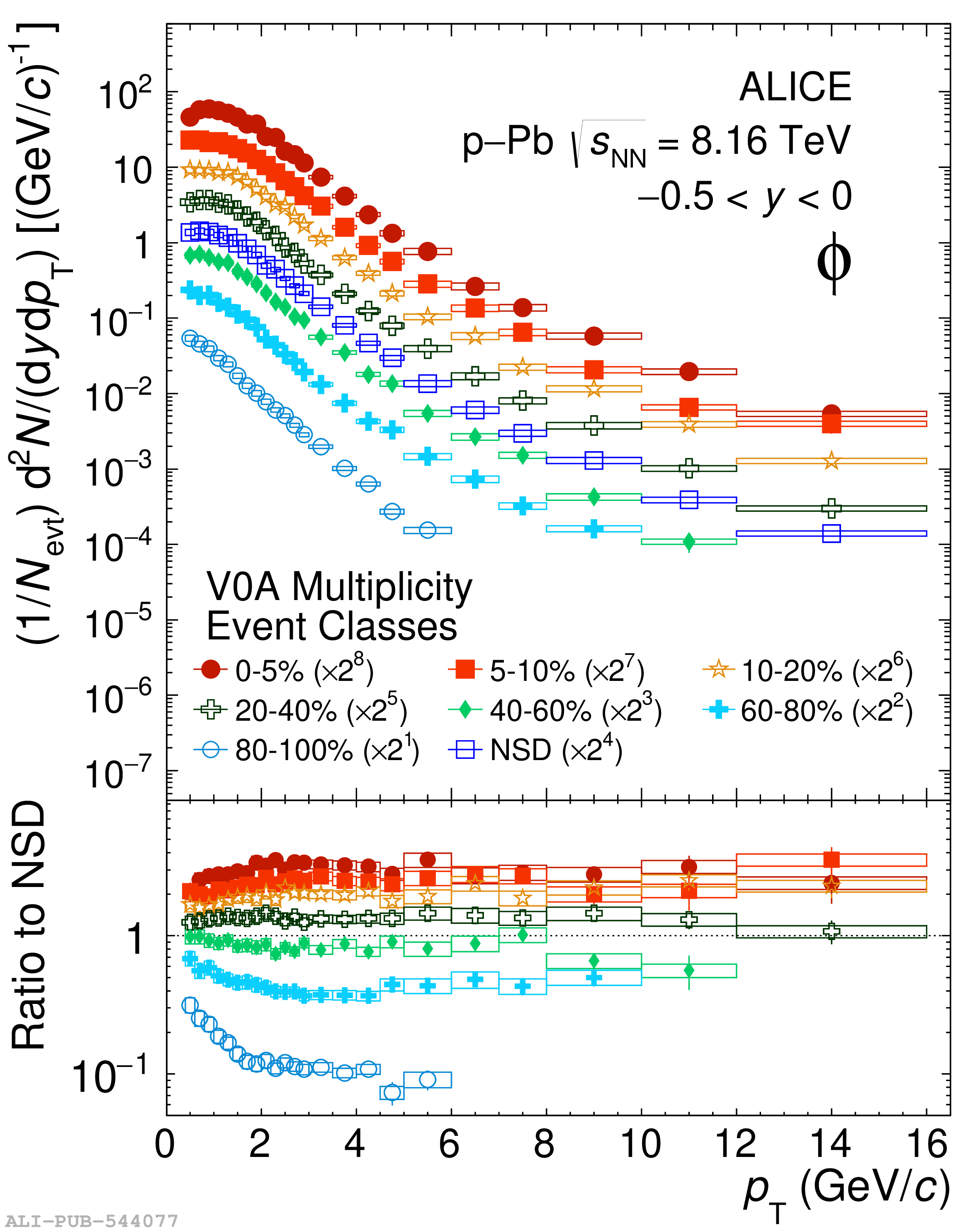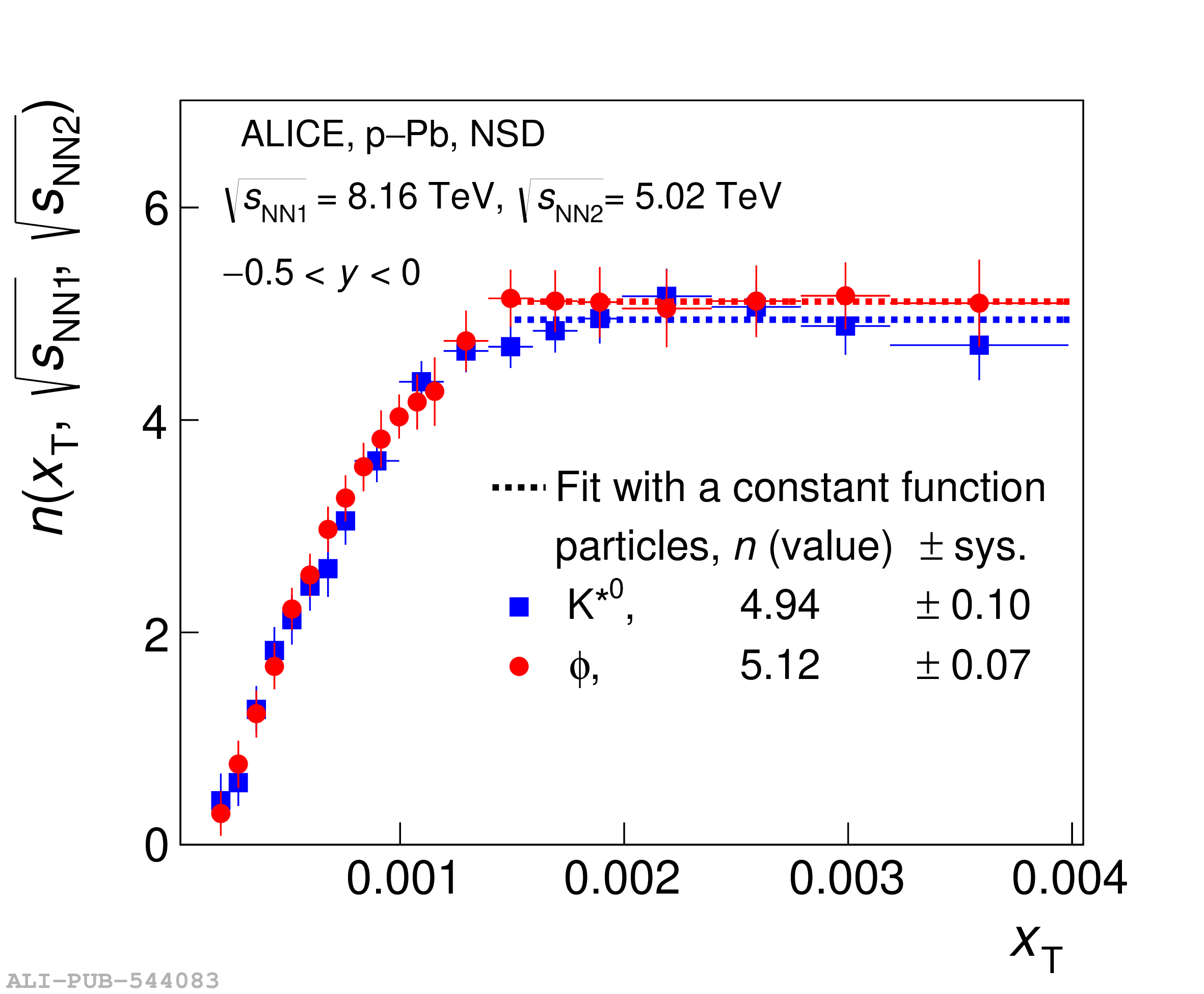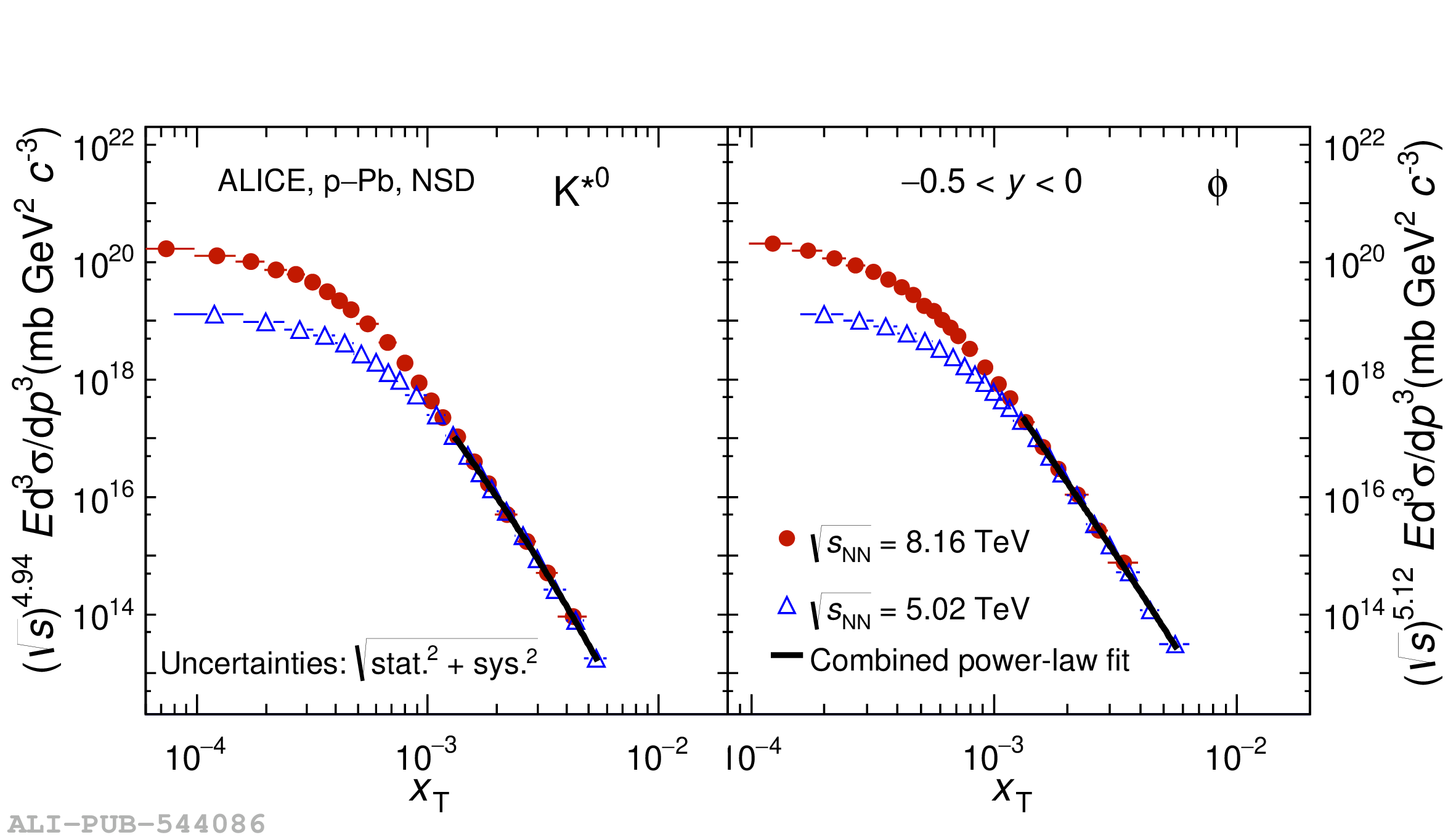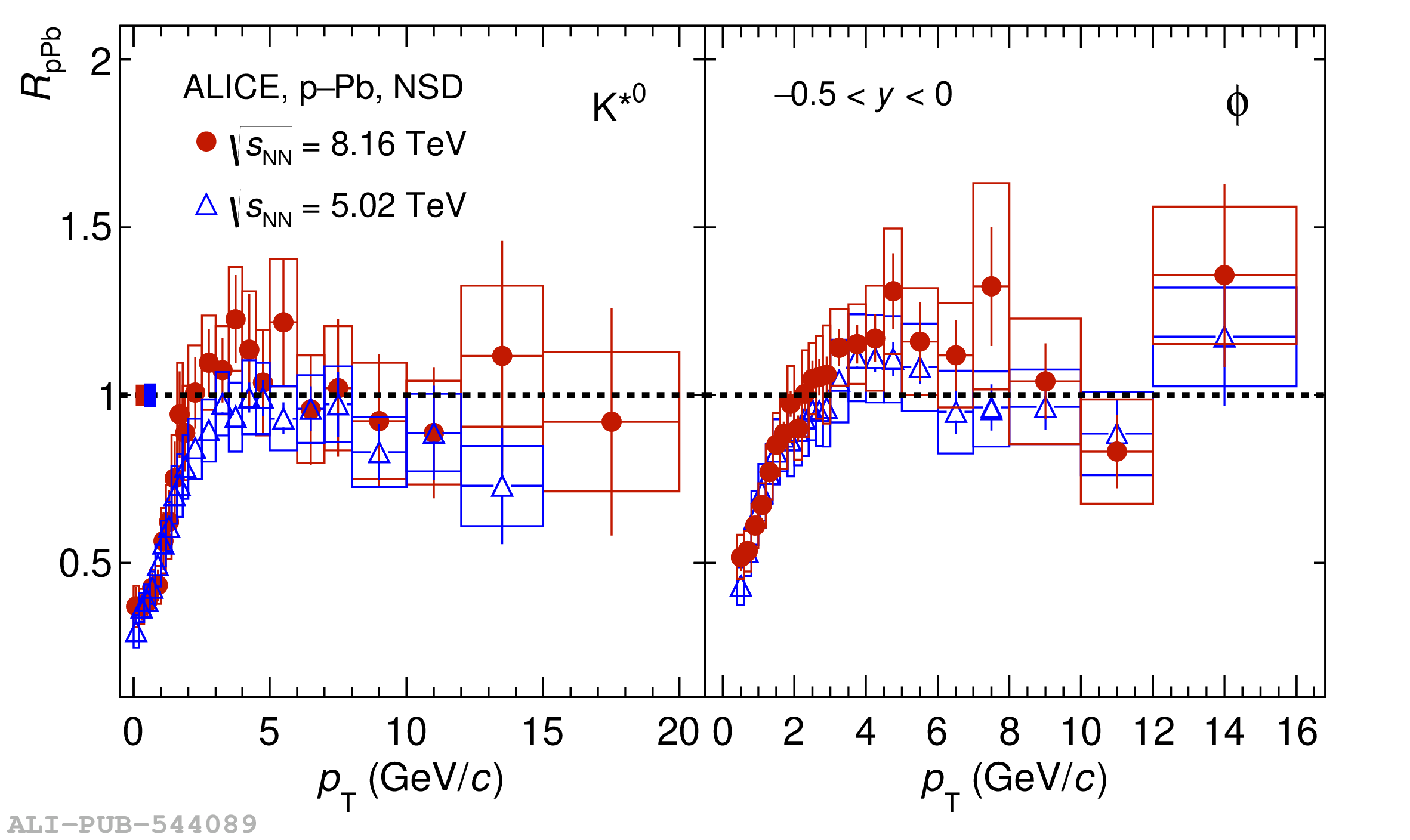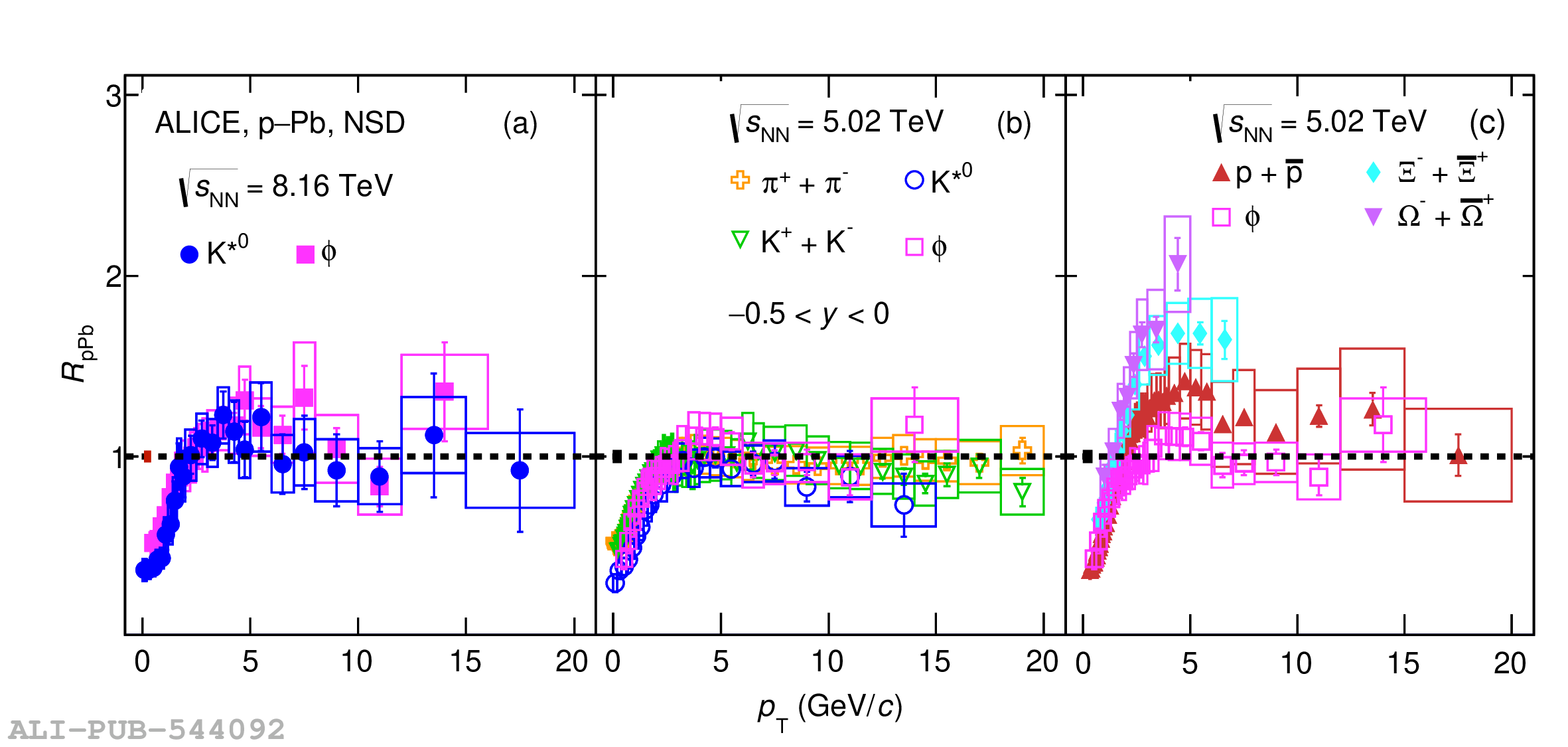The production of $\mathrm{K}^{*}(\mathrm{892})^{0}$ and $\mathrm{\phi(1020)}$ resonances has been measured in p-Pb collisions at $\sqrt{s_{\rm NN}}$ = 8.16 TeV using the ALICE detector. Resonances are reconstructed via their hadronic decay channels in the rapidity interval $-$0.5 $<~$ $y$ $<~$ 0 and the transverse momentum spectra are measured for various multiplicity classes up to $p_{\rm T}$ = 20 GeV/$c$ for $\mathrm{K}^{*}(\mathrm{892})^{0}$ and $p_{\rm T}$ = 16 GeV/$c$ for $\mathrm{\phi(1020)}$. The $p_{\rm T}$ -integrated yields and mean transverse momenta are reported and compared with previous results in pp, p-Pb and Pb-Pb collisions. The $x_{\mathrm{T}}$ scaling for $\mathrm{K}^{*}(\mathrm{892})^{0}$ and $\mathrm{\phi(1020)}$ resonance production is newly tested in p-Pb collisions and found to hold in the high-$p_{\rm T}$ region at Large Hadron Collider energies. The nuclear modification factors ($R_{\rm pPb}$) as a function of $p_{\rm T}$ for $\mathrm{K}^{*0}$ and $\mathrm{\phi}$ at $\sqrt{s_{NN}}$ = 8.16 TeV are presented along with the new $R_{\rm pPb}$ measurements of $\mathrm{K}^{*0}$, $\mathrm{\phi}$ , $\Xi$, and $\Omega$ at $\sqrt{s_{\rm NN}}$ = 5.02 TeV. At intermediate $p_{\rm T}$ (2-8 GeV/$c$), $R_{\rm pPb}$ of $\Xi$, $\Omega$ show a Cronin-like enhancement, while $\mathrm{K}^{*0}$ and $\mathrm{\phi}$ show no or little nuclear modification. At high $p_{\rm T}$ ($>$ 8 GeV/$c$), the $R_{\rm pPb}$ values of all hadrons are consistent with unity within uncertainties. The $R_{\rm pPb}$ of $\mathrm{K}^{*}(\mathrm{892})^{0}$ and $\mathrm{\phi(1020)}$ at $\sqrt{s_{\rm NN}}$ = 8.16 and 5.02 TeV show no significant energy dependence.
Phys. Rev. C 107 (2023) 055201
HEP Data
e-Print: arXiv:2110.10042 | PDF | inSPIRE
CERN-EP-2021-200
Figure group


